
May 27, 2020 – The Star Wars franchise is the second highest grossing film series of all time. People really love these movies. But people who love SW can also hate it – when it doesn’t live up to their expectations. SW had some major missteps along the way. See below. For my SW fan edits, go here.
MAIN CULPRITS: Return of the Jedi, The Prequel Trilogy, The Last Jedi, The Rise of Skywalker

![]() Star Wars was a smash-hit in 1977. It blew people away. The film remained in theaters for over a year, something unheard-of today.
The movie had a lot going for it: George Lucas’s great idea for a space opera, a talented cast and crew, new special effects, and great music.
Star Wars was a smash-hit in 1977. It blew people away. The film remained in theaters for over a year, something unheard-of today.
The movie had a lot going for it: George Lucas’s great idea for a space opera, a talented cast and crew, new special effects, and great music.
20th Century Fox offered Lucas $8 million as the budget for the movie, and $500,000 to direct. Lucas made a counteroffer. He agreed to only $150,000 for directing, if he could own the rights to any future SW sequels, plus the rights to all SW merchandising. 20th Century Fox happily complied, but then SW went on to make $100 million from toy sales. Somehow Lucas foresaw that merchandising would/could be key.
As of today, it’s estimated that the SW franchise has generated over $42 billion in merchandise sales. This is four times greater than its box office sales of $10 billion. That’s great for certain people’s bank accounts, but not great for audiences.
A New Hope had some campiness, especially the cantina scene. The next movie in the trilogy, The Empire Strikes Back, had even less camp. It’s the darkest of all the SW films, the least campy, and yet it often tops lists as the best SW film. Probably not a coincidence.

However, by the third installment, Return of the Jedi, the campiness was spilling over. The ewoks (teddy bears) and creatures in Jabba’s palace seemed silly and juvenile. But those “characters” no doubt made for great merchandising.
Return of the Jedi was a turning point in the SW franchise. From this point forward, SW would have campy “characters” because merchandising is key. Such characters would litter the next two SW trilogies. (See porg above and more examples below.) For us, the viewers, this push for merchandising has meant weaker, less-enjoyable movies.
Because ROTJ exceeded Empire in domestic box office, Lucas felt vindicated for his merchandising-based decisions on ROTJ, and for making ROTJ more cheery than the darker Empire. However, Empire exceeded ROTJ in worldwide box office. Plus, if you ask people their favorite SW film, they usually say A New Hope or Empire. By comparison, ROTJ, the merchandising extravaganza that ruined films to come, is disliked.

MAIN CULPRITS: Return of the Jedi, The Prequel Trilogy, The Last Jedi
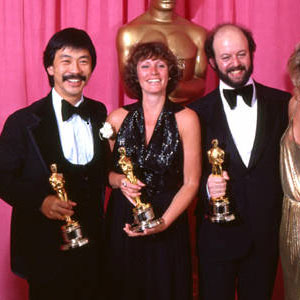
![]() Though Star Wars: A New Hope credits Lucas as its sole writer, he had help.
Friends rewrote the opening crawl; actors and others changed dialogue; and his editing team, who won Oscars for the movie, made significant story changes and improvements
(see Youtube video linked in the Bibliography).
Though Star Wars: A New Hope credits Lucas as its sole writer, he had help.
Friends rewrote the opening crawl; actors and others changed dialogue; and his editing team, who won Oscars for the movie, made significant story changes and improvements
(see Youtube video linked in the Bibliography).
For the next installment, The Empire Strikes Back, Lucas only did the story. The movie had a different director and new screenwriters, and gave us arguably the best SW film. But the following film, Return of the Jedi, also had a different director, and a writer working with Lucas. With a team in place, why was ROTJ so bad? Lucas vetoed their ideas, probably for merchandising purposes. For example, the team wanted Han Solo to die in ROTJ, but Lucas thought that would hurt the sales of Han Solo dolls. Also, his team had Endor as a Wookiee planet, but Lucas made it the teddy bear (ewok) planet.
No doubt Lucas vetoed more of his team’s suggestions on ROTJ. Point being, when Lucas allows others to improve his big-picture ideas, there is success (first two films). When he overrides their contributions or tries to go it alone, there is failure (third film). This brings us to the Prequel Trilogy. What happened?
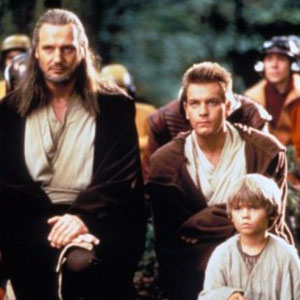
On the Prequels, Lucas went it alone. He was the sole writer and director of the three Prequel movies, except for one co-writer on Attack of the Clones. As a result, the Prequels have the type of boring scenes and dialogue his friends and crew insisted he remove from A New Hope. With the Prequels, Lucas could do whatever he wanted. And he did. The result was underwhelming.
Frank Scheck of The Hollywood Reporter said of Menace: “Lucas’ screenplay seems oddly underdeveloped and lacks the earlier trilogy’s strong plot line and genuine wit.” A writer on Slate was more pointed: “The prequels are boring and annoying and soulless.” Consensus was, the Prequels were too long, had too much CGI, had cringeworthy dialogue and characters (Jar Jar), and weren’t as good as the Original Trilogy.
The main story of the Prequels is Anakin’s transition from a sweet kid into a vengeful monster. That transition was difficult to buy, as presented to us viewers. But I don’t blame Hayden Christensen. His dialogue was poorly written, he was being directed by someone focused only on CGI, and he was being expected to make believable a character transition that the plot and script weren’t making believable. Bottom line: if Lucas had had a team with editorial input on the Prequels, the films would have been better.
(The one-man show that is The Last Jedi will be addressed later.)
MAIN CULPRIT: The Prequel Trilogy

![]() The Original Trilogy’s crew developed new ways to achieve analogue special effects.
They made miniatures, and invented camera equipment to shoot miniatures in new ways. The result? Even if something didn’t look perfectly real – because it was
a miniature – it still had a realness. Because it was real, a real object.
The Original Trilogy’s crew developed new ways to achieve analogue special effects.
They made miniatures, and invented camera equipment to shoot miniatures in new ways. The result? Even if something didn’t look perfectly real – because it was
a miniature – it still had a realness. Because it was real, a real object.
They also used blue screens, and then slipped in actual paintings as fill. And, Lucas insisted on having everything look “used.” Star Wars: A New Hope looks dustier than the Old West. Its objects, buildings, clothing, and ships definitely look used. Also, the sets were real!
Except for one wire-frame image of the Death Star, nothing was digital. All this added up to a very real and genuine look for the Original Trilogy. They would return to this analogue look for the Sequel Trilogy – because of what happened with the Prequel Trilogy…
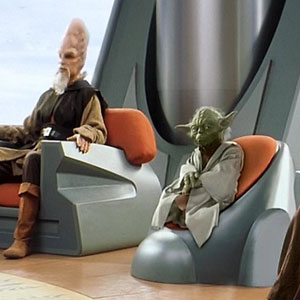
The last of the Original Trilogy movies, ROTJ, was in 1983. After that time, the world of computer graphics began to flourish. And Lucas’s visual effects company, ILM, led the way in computer-generated imagery (CGI). ILM developed new techniques for films like Terminator 2 (1991) and Jurassic Park (1993). By the start of the Prequel Trilogy (1999), which was 16 years after The Original Trilogy ended, ILM’s CGI technology was much more advanced, and would become yet more advanced with new techniques developed for the Prequel Trilogy.
So, with new CGI technology available, and more to innovate, Lucas decided to make the Prequel Trilogy mostly CGI. He went overboard. Almost everything, including the sets, are digital. Only the human actors look real. Except for some scenes on Tatooine, nothing looks “used.” Almost everything looks clean, shiny, and new. And not real. And even though it predates the Original Trilogy, it looks much more modern.
MAIN CULPRIT: The Sequel Trilogy
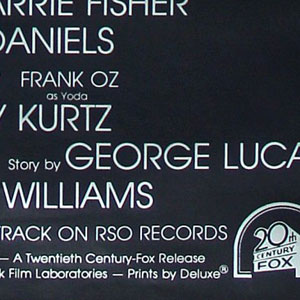
![]() There is a consistent feel among the Original Trilogy, and then among the Prequel Trilogy, probably because each of the first six films was a story by George Lucas.
But then, in 2012, Lucas sold LucasFilm to Disney (another top mistake of Star Wars). Lucas gave Disney his film treatments for the Sequel films, but
Disney decided they wanted to go in a different direction and “make something for the fans.” They told J.J. Abrams to discard Lucas’s story ideas for the Sequels.
With Lucas’s basic framework missing, what would happen with the Sequel films?
There is a consistent feel among the Original Trilogy, and then among the Prequel Trilogy, probably because each of the first six films was a story by George Lucas.
But then, in 2012, Lucas sold LucasFilm to Disney (another top mistake of Star Wars). Lucas gave Disney his film treatments for the Sequel films, but
Disney decided they wanted to go in a different direction and “make something for the fans.” They told J.J. Abrams to discard Lucas’s story ideas for the Sequels.
With Lucas’s basic framework missing, what would happen with the Sequel films?
The Sequel Trilogy ended up having two directors, Abrams and Rian Johnson, and a total of five writers. Abrams co-wrote with others for his two movies; Johnson wrote The Last Jedi alone. Two directors and five writers doesn’t automatically mean problems. There can be unity. But these directors and writers weren’t on the same page with one another at all. The consistency exhibited by the first six films was gone for the Sequel Trilogy. It ended up being a hodgepodge mess – The Hodgepodge, Nothing-Makes-Sense Trilogy. Some examples:
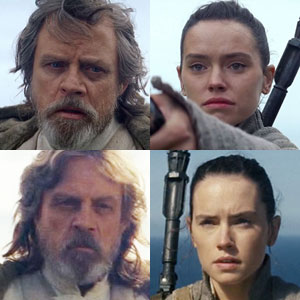
At the end of The Force Awakens, Rey approaches Luke with lightsaber in hand. They look at each other with deep anguish. In contrast, at the start of The Last Jedi, Luke looks angry and Rey looks confused. Then, even though SW7 ended with a lot of pathos, the director of SW8 decided to change the scene into a comic one: Luke tosses the lightsaber over his shoulder. And it wasn’t just the emotion that didn’t match, the lighting, hairstyles, and makeup don’t match either. And this is a movie with a budget of around $250 million!
If Luke is reluctant to take the lightsaber, okay. But, to match the sentiment of the previous movie, couldn’t he merely refuse the lightsaber? Rey hands it out, but he politely pushes it away? Why the comedy gaff (toss over shoulder)? Is this meant to be a comic lead-in to the large, teated creature who is Luke’s milk supply?
Obviously, the two directors weren’t in unison. And maybe Luke tossing the lightsaber was the director of SW8’s way of letting us know that he himself was tossing out anything from SW7 he didn’t like, and was going to do things his own way. It’s a shame. Some island scenes between Luke and Rey in TLJ are strong. But they are surrounded by weak scenes, stupid story ideas, and silly “characters.”

In SW7, Snoke was scary, large and looming. In SW8, sort of scary but not as much. By SW9, The Rise of Skywalker, we had…Snoke in a jar. Maybe SW7’s team assumed the character would be fleshed out more in SW8. But that didn’t happen in SW8, and Snoke died. So what do you do for SW9? Just show him in a jar! Easy! Done!
If it seems like these guys were making things up as they went along, it’s because…they were! They had no initial, mature, unified vision for the Sequel Trilogy. No big game plan going in. The directors, writers, producers, and Disney were shooting from the hip. And missing. And egos were involved.
Another inconsistency. The writers of SW7 insinuated that Rey’s background was important. Maz told Rey: “That lightsaber was Luke’s. And his father’s before him. And now, it calls to you.” The writers of SW7 probably assumed, as with Snoke, that the next film would flesh this out. But then the director of SW8, again, went in his own, different direction: Rey’s parents were nobodies.
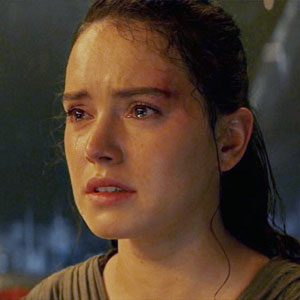
Why this new direction? Johnson wanted to convey that people can be important (a Jedi) regardless of their family. However, the Prequel Trilogy had already shown that concept. It had PLENTY of Jedi characters whose parents we know nothing about: Yoda, Mace Windu, Agen Kolar, Ki-Adi-Mundi, Kit Fisto, Plo Koon, Saesee Tiin, Shaak Ti, Stass Allie, Depa Billaba, Eeth Koth, Even Piell, Oppo Rancisis, Adi Gallia, Yarael Poof, Yaddle, etc.
In any case, after SW8’s treatment of Rey’s background, the question became what to do in SW9? Like Snoke in a jar, the writers whipped up an idea: let’s resurrect Palpatine and make Rey his granddaughter!
Rey’s parents don’t have to be special. The issue is: the directors and writers jerked us around, and the producers let it happen. These adults and supposed professionals – big-time Hollywood writers, directors, and producers – went into the CLOSING CHAPTER of the Star Wars saga without a unified storyline. It is incredible when you think about it.
And it wasn’t just that the Sequel films disagreed with one another, they didn’t make sense individually. The Force Awakens had several things that didn’t make sense. The Last Jedi had more things that didn’t make sense. With The Rise of Skywalker, I’m not sure if ANYTHING in the movie makes sense. (See videos below.) Story confusion makes a film weak, and the story of The Rise of Skywalker was weak to begin with.
The Sequel Trilogy turned out to be the Weak, Jumbled Mess, Nothing-Makes-Sense, Hodgepodge Trilogy. What we needed, instead, was something like Christopher Nolan’s Batman trilogy – a unified story… with no stupid jokes… no silly “characters”… and scriptwriting that wasn’t mere audience pandering (“Rey Skywalker”)… or shooting from the hip. How cool would that have been? Oh well.